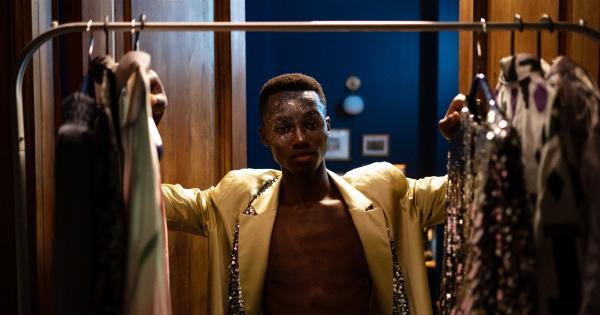Blonde hair has always been associated with beauty and femininity, with many women turning to hair dye and highlights to achieve the coveted golden hue.
However, there is a scientific reason why blonde hair seems to be more ‘resilient’ in women compared to men, and it lies within our genetic makeup. In this article, we will explore the genetic factors responsible for the prevalence of natural blonde hair in women.
1. Melanin and Hair Color
Our hair color is determined by the amount and distribution of a pigment called melanin. There are two types of melanin: eumelanin, responsible for black and brown hair, and pheomelanin, responsible for red and yellow hair.
The ratio of these two pigments determines our hair color, with high levels of eumelanin resulting in darker hair and higher levels of pheomelanin leading to lighter hair colors, including blonde.
2. The MC1R Gene
Blonde hair is predominantly caused by variations in a specific gene called MC1R (Melanocortin 1 Receptor). This gene, located on chromosome 16, plays a crucial role in determining our hair and skin color.
Certain variants of the MC1R gene are associated with the production of lower levels of eumelanin and higher levels of pheomelanin, resulting in lighter hair colors like blonde.
3. The Sex Chromosomes
Our genetic makeup consists of pairs of chromosomes, with women having two X chromosomes (XX) and men having one X and one Y chromosome (XY). The MC1R gene is located on the X chromosome.
Since women have two copies of the X chromosome, they have twice the chance of inheriting a variant of the MC1R gene associated with blonde hair compared to men.
4. Genetic Inheritance Patterns
Hair color inheritance is a complex process involving multiple genes and genetic variants. The inheritance of blonde hair color follows a recessive pattern, where both parents must carry the gene variant for their child to be born with blonde hair.
Since women have two copies of the X chromosome, they have a higher likelihood of inheriting the necessary variants from one or both parents, making natural blonde hair more common in females.
5. Selection and Evolutionary Psychology
Blonde hair is a relatively rare trait, especially in some parts of the world. Yet it remains more prevalent in women compared to men. This phenomenon can be attributed to sexual selection and evolutionary psychology.
Throughout history, blonde hair has been associated with femininity and youthfulness, which may have attracted more partners for women with blonde hair. These preferences could have contributed to the higher frequency of the necessary genetic variants in the population.
6. Geographic Distribution
Blonde hair is more common in certain regions, such as Northern Europe. This variation in hair color distribution can be explained by the interactions between genetics, evolution, and geography.
The prevalence of blonde hair in these regions can be attributed to genetic variations that have been favored by natural selection, possibly due to factors such as adaptation to lower light conditions and increased vitamin D synthesis in areas with limited sunlight.
7. Genetic Mutations and Natural Selection
Genetic mutations can occasionally occur, leading to the development of new hair color variations. These mutations may offer certain advantages, such as improved survival in specific environments or increased attractiveness to potential partners.
Over time, these advantageous mutations may become more prevalent in the population through natural selection, leading to the appearance of new hair colors, including blonde.
8. Hormonal Factors and Hair Color
Hormonal factors can also influence hair color, including the prevalence of blonde hair in women. Estrogen, the primary female sex hormone, plays a crucial role in promoting pheomelanin production, which results in lighter hair colors.
The higher levels of estrogen in women compared to men may contribute to the increased likelihood of natural blonde hair.
9. Psychological and Societal Factors
Psychological and societal factors also play a significant role in the prevalence of blonde hair in women.
The cultural idealization of blonde hair, often portrayed in media and popular culture, may influence women’s decisions to dye their hair blonde or pursue hair color treatments. This sociocultural influence can create the perception that blonde hair is more prevalent in women, even though it may not necessarily be the case genetically.
10. Conclusion
In conclusion, the prevalence of natural blonde hair in women can be attributed to a combination of genetic factors, including the MC1R gene, sex chromosome inheritance patterns, and the influence of hormonal, selection, and environmental factors.
While societal trends and preferences may contribute to the perception of blonde hair as more common in women, the genetic makeup of females does provide a higher chance of inheriting the necessary variants for blonde hair. Understanding the genetic and biological factors behind hair color variations can further our knowledge of human evolution, genetics, and the fascinating diversity of traits that exist within our species.





























